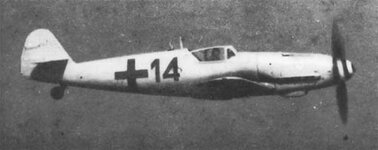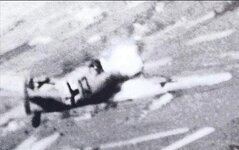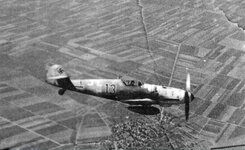Exhaust grime is very noticeable in SOME photographs of later Bf109's, mostly high-altitude fighters like the G-6/AS. Makes me wonder... could the pilots adjust the air/fuel mixture in flight?... or would it just become richer at higher altitudes, resulting in heavier exhaust? Could it also be due to late-war fuel quality?
Navigation
Install the app
How to install the app on iOS
Follow along with the video below to see how to install our site as a web app on your home screen.
Note: This feature may not be available in some browsers.
More options
You are using an out of date browser. It may not display this or other websites correctly.
You should upgrade or use an alternative browser.
You should upgrade or use an alternative browser.
Late Bf109 exhaust grime
- Thread starter Moose
- Start date
Ad: This forum contains affiliate links to products on Amazon and eBay. More information in Terms and rules
More options
Who Replied?Exhaust grime is very noticeable in SOME photographs of later Bf109's, mostly high-altitude fighters like the G-6/AS. Makes me wonder... could the pilots adjust the air/fuel mixture in flight?... or would it just become richer at higher altitudes, resulting in heavier exhaust? Could it also be due to late-war fuel quality?
Exhaust grime is more often related to oil consumption...
Crimea_River
Marshal
Also seen on 190D's. I'm no expert but would suggest a combination of factors including fuel and oil quality plus minimal time for harassed ground crews to keep their aircraft clean.
Deleted member 68059
Staff Sergeant
- 1,056
- Dec 28, 2015
They were using synthetic fuel almost exclusively from about Jan 1941 onwards, for which they had been developing a huge hydrogenation industry to provide for, for a decade beforehand. Their development and use of synthetics had absolutely nothing to do with being subjected to bombing. There is nothing dirty at all about them that doesn't apply to all AVGAS.Those 109's appear to be late models and the Germans were forced to use synthetic fuels late in the war during the bombing and these fuels were particularly dirty.
Last edited:
Deleted member 68059
Staff Sergeant
- 1,056
- Dec 28, 2015
Exhaust grime is very noticeable in SOME photographs of later Bf109's, mostly high-altitude fighters like the G-6/AS. Makes me wonder... could the pilots adjust the air/fuel mixture in flight?... or would it just become richer at higher altitudes, resulting in heavier exhaust? Could it also be due to late-war fuel quality?
As stated this is more of a symptom of oil consumption, because all aero engines run rich at maximum power.
Later in the war to save time and fuel in testing, they dramatically cut the running-in hours that new factory engines were allowed, and then finally stopped running them in
on petrol at all, and used propane.
Consequently the planes were sent out with very badly bedded in piston rings, and this may well have been more visible in effect in those engines using higher boost, as they put a lot of stress on the upper piston ring. This (along with general bad build quality and reduction in assembly standards) is probably the main cause in my opinion.
Last edited:
Users who are viewing this thread
Total: 1 (members: 0, guests: 1)
Similar threads
- Replies
- 3
- Views
- 2K



